The Lost Murals Of The King Edward Hotel
Before The King Edward Hotel in downtown Toronto was renovated in 1981, thousands of visitors were greeted by magnificent displays of colorful and dramatic art-murals in the lobby.
When the hotel opened in 1903 as Toronto’s first luxury hotel, the Edwardian-style of opulence and grandeur was adopted by the hotel with four, life-sized paintings of early Canadian history scenes adorning the lobby walls – painted by renowned American artist William de Leftwich Dodge.
A panorama of French fur traders, First Nations Peoples, the early exploration of North America for England by John Cabot, and General Wolfe’s victory on the Plains of Abraham were all part of the original four early-twentieth century romantic-realism style murals.
Interestingly, this last mural mentioned was the cause of much disagreement between the American mural artist Dodge and the Toronto-based hotel architect E.J. Lennox.
The dispute was not because of the subject matter, but because of its design. Lennox argued that this particular mural was too dark, gloomy and big for the space over the hotel’s original elevators (now the entrance way to the hotel’s Consort Bar) beside the Grand Staircase. Dodge would not be persuaded to alter his “artistic-license” – even taking the matter to an American court and winning his case. However, the artist’s Canadian employer disregarded the ruling – and ultimately replaced Dodge’s mural of General Wolfe with another painting by well-known Canadian muralist Frederick Challener.
This new mural was titled Trading at Fort Rouillé and depicted part of Toronto’s own early history with the French Fort Rouillé being established for trade with the First Nations before the British established the town of York – that later became Toronto.
(Challener’s mural Trading at Fort Rouillé above previous elevators)
(The entrance to the Consort Bar and Grand Staircase today)
Dodge’s other three remaining murals depicted young French women sent to Quebec by Louis XIV as wives for soldiers, traders, and other settlers (over the main desk); the 1497 landing of John Cabot in Canada’s Newfoundland; and First Nations Peoples protesting the invasion of both French and English settlers.
Unfortunately, all of these treasured works of art have been lost – either taken down or covered over by the current wood-panels that are now on the lobby walls as part of the renovation in the early 1980s. No one is quite sure what happened to them or the condition they may be in if uncovered today.
(The King Edward Hotel Front Desk and current wood panels today)
Despite the loss, the King Edward Hotel lobby still remains a regal work of color and artistry for guests, and the hotel remains a place of regal luxury and grandeur. Sadly – the lost murals of the hotel are royal treasures that may never be fully recovered.
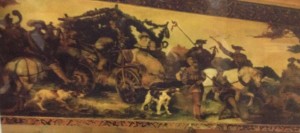


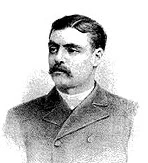
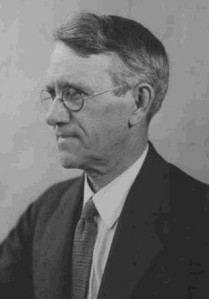
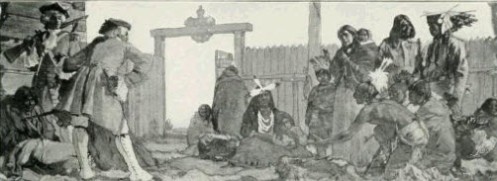
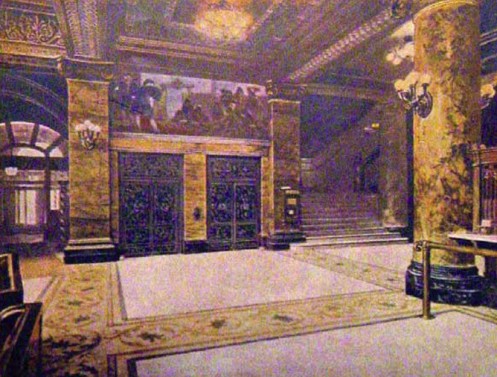
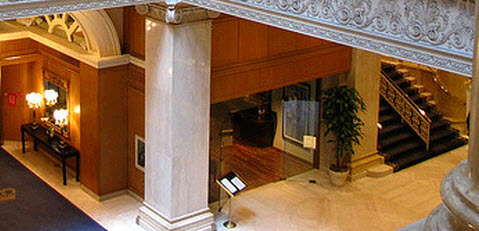
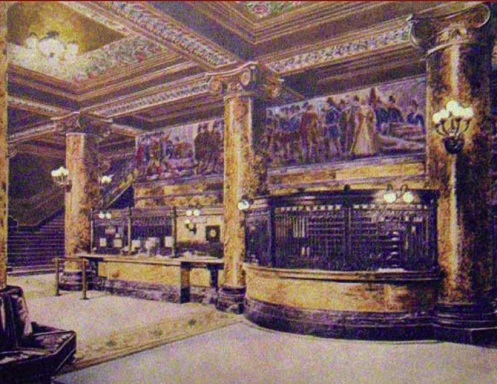
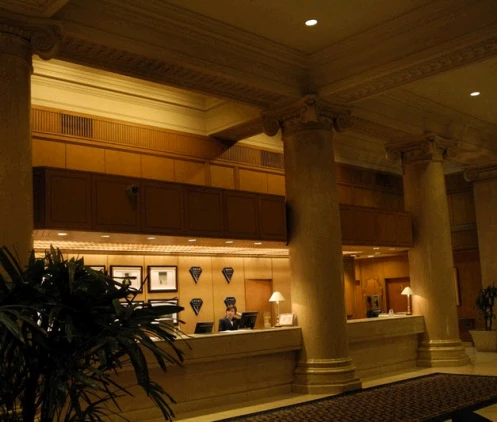
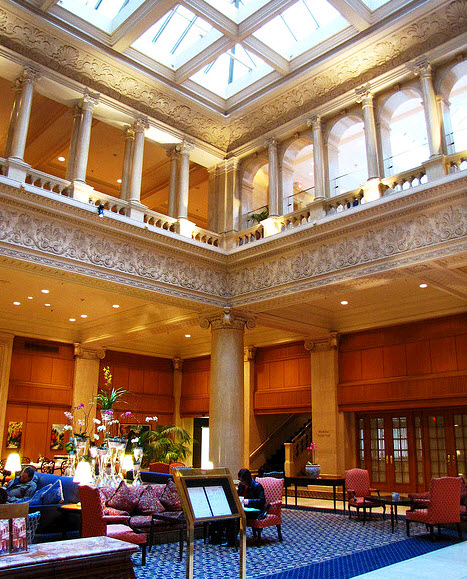
Thank you for the article about the King Edward Hotel murals painted by my grandfather, William de Leftwich Dodge. In addition, it was part of the Louis Comfort Tiffany commission to decorate the public areas. Dodge submitted sketches for each of his four murals, which were approved by the architect. When he was told to change one of his finished murals he declined to do so and his father-in- law, Roger A. Pryor, a judge on the New York Supreme Court sued the Tiffany company and won a judgement that an artist’s work could not be changed by someone else if it was signed by the artist, which it was. This was a landmark decision for artists. Notwithstanding this, Tiffany had the mural changed. Dodge refused payment for all of his murals. I wonder if his work is covered over by the renovation panels? Possibly that might be revealed through the architect’s plans. Dodge was recognized as one of America’s foremost muralist’s.
Sincerely, Leftwich D. Kimbrough
e-mail:kimbrough.leftwich@gmail.com
Thanks very much for providing this interesting information. I am passing this on to The King Edward Hotel as well. I’m pleased you enjoyed the blog, and pleased even more to have a personal, ancestral connection with William de Leftwich Dodge. I know that after extensive renovations, the thinking is that the murals were removed. It’s rather unfortunate that the artistic work of your grandfather was not appreciated, but as you said, a great landmark case for the integrity of an artist’s work – thanks to William de Leftwich Dodge.